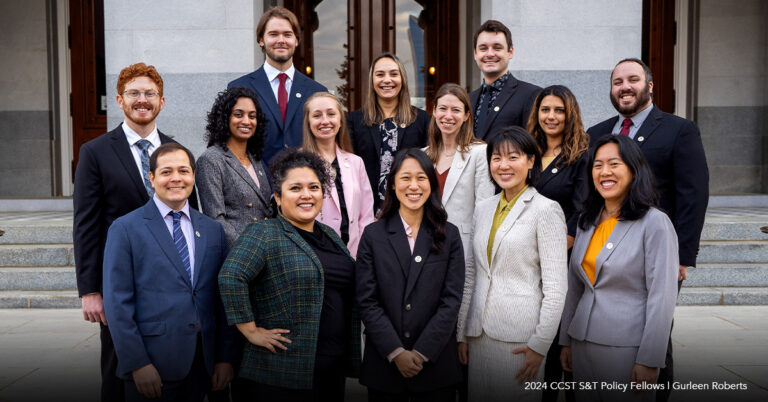Update: Applications for the CCST Science & Technology Policy Fellowship Have Closed
CCST Prepares to Take a New Look at Energy
November 3, 2006 | CCST Newsroom | Contact: M. Daniel DeCillis
At the May 23rd CCST meeting in Sacramento, the urgent need to examine options for California’s energy future in light of changing global, national and state economics, policies, and technologies was raised. This “big picture” view needs to include the realities of sustainability and climate change as well as the realistic ability to be able to accomplish set goals.

In addition to meeting state needs, there are also real opportunities for California to take on more of a leadership role in energy innovation, research and development that would impact the economy and jobs. Since May, several reports and media articles have appeared that confirm a growing interest in the state re-examining its energy options and especially the role of nuclear energy. Consequently, CCST’s October meeting continued the focus on California’s energy future. Discussions are being centered on putting energy needs in context with respect to new data on sustainability and global warming and suggesting how to frame the costs, benefits, and trade-offs of California’s complete energy needs in the short and long term.”Fossil fuel dependency is not a long-term option,” said keynote speaker Harold Ray, consultant and retired executive vice president, Southern California Edison, and former president of the American Nuclear Society. “There are serious concerns about energy independence, sustainability, competitiveness and security.”
The meeting was held in cooperation with the National Academy of Engineering (NAE). Speakers included Robert Fri, vice-chair of the National Research Council Board on Energy and Environmental Systems.The program was organized by CCST Council Chair Lawrence Papay, an energy consultant who recently retired from the position of sector vice president for the Integrated Solutions Sector at Science Applications International Corporation; CCST Fellow and Council Member Linda Cohen, professor of economics at UC Irvine and professor of social science and law at USC and member of both of CCST’s Public Interest Energy Research program Independent Review Panels; CCST Fellow Maxine Savitz, retired general manager of technology partnerships, Honeywell, Inc., vice president of the NAE, and a member of the Secretary of Energy’s Laboratory Operations Board and the National Science Board; and CCST Fellow C. Judson King, director of the Center for Studies in Higher Education.”Imagining a sustainable energy future is difficult enough, but predicting how it will come about is really risky,” said Fri. “The challenge for energy policy is to foster technological innovation in the private sector that will meet national goals. The challenge for science and technology is to build the knowledge base that maximizes the opportunities for successful innovation.”
The issue of using nuclear power in California was a major component of discussion at the October meeting. At the May meeting, it was concluded that nuclear power in California encounters public perception and investor economics, not principally technical problems. It has become apparent that nuclear power must increasingly become a central source of energy for sustainable development as global energy demand continues to grow exponentially. This has led to the Bush Administration’s Global Nuclear Future Initiative, which is designed to position the United States to have international influence over the expanding global use of nuclear energy. However, in California, state legislation on spent nuclear fuel waste disposal currently precludes any new construction of nuclear power plants.
“The October CCST meeting, in collaboration with the NAE, helped put into perspective the challenges and opportunities facing California in the production, distribution and use of clean, reliable energy sources and economical energy efficiency options, including nuclear energy,” said CCST Executive Director Susan Hackwood. “The time is right for a deeper analysis of the costs, benefits, and public perception issues concerning nuclear energy. Moreover, California does not have to build a plant in order to help further the nuclear agenda. Just the fact that we are seriously considering nuclear in our energy mix is a very strong signal to the rest of the country who may be considering nuclear energy but are further along than we are.”
CCST is developing a multi-part proposal to explore the issues surrounding nuclear power in California’s energy future and will continue its dialogue with the Governor’s office and the Legislature in the months to come.
“California has the right resources and expertise to explore these challenges and opportunities,” said Ray at the May meeting. “We need to look down the road to develop a comprehensive and consistent strategy that works.”






